Affiliate Disclosure: This post may include affiliate links. If you click and make a purchase, I may earn a small commission at no extra cost to you.
Both Crucial P3 Plus and WD Black SN770 are very popular entry-level DRAM-less SSDs. Both of these are entry-level Gen 4.0 NVMe SSDs known for their competitive pricing and average specifications. The Crucial P3 Plus uses QLC NAND flash, whereas the SN770 uses TLC NAND flash. It is a big difference and can significantly impact your decision between the two. If you ask me to choose between the two, without other conditions, I would choose the SN770 right away. I have two reasons. The first is the TLC NAND flash, and the second is SN770’s better TBW.
The P3 Plus uses Micron’s N48R FortisFlash QLC NAND, while the SN770 uses Kioxia’s BiCS5 TLC NAND. Both drives lack any encryption. People are often confused between the two because of their similar price tags, the same PCIe generation, and the same target audience, i.e., regular users.
DRAM-Less SSDs like these utilize the system’s RAM through DMA (Direct Memory Access). It helps reduce prices, power consumption, and heat. There are some drawbacks that you can understand here.
The Phison PS5021-E21T is a third-party PCIe 4.0 controller designed for broad OEM use, offering strong performance and wide NAND compatibility in SSDs like Crucial P3 Plus, which are DRAM-less and cost-efficient. The WD 20-82-10081-A1 Polaris MP16+, on the other hand, is an in-house WD controller optimized for WD/SanDisk NAND and firmware, emphasizing consistency within WD’s own ecosystem.
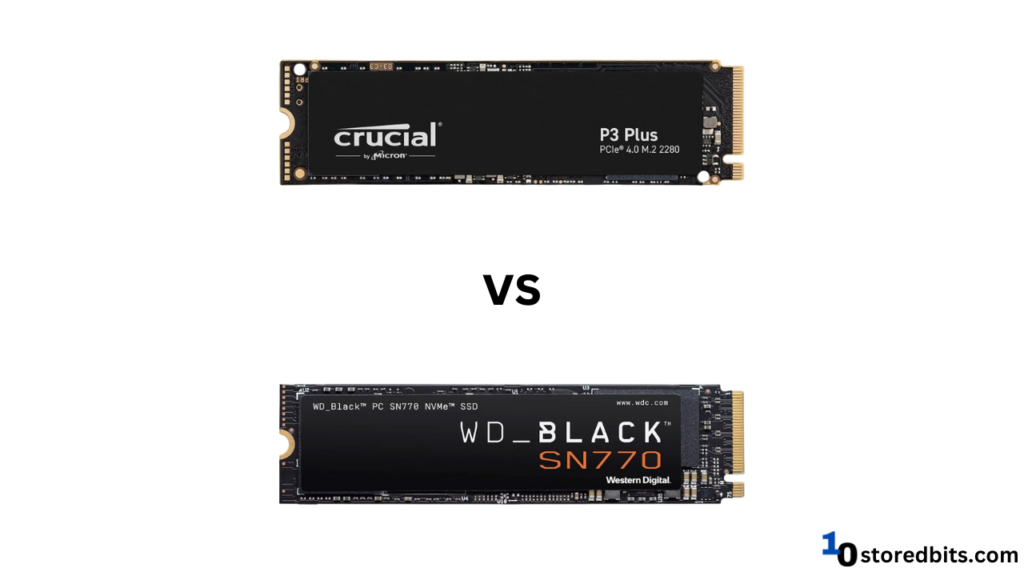
There are reasons to choose both drives in different scenarios, and we will cover each. Let’s start the article by comparing the theoretical specifications, then proceed.
Theoretical Specifications
| Specification | Crucial P3 Plus | WD Black SN770 |
|---|---|---|
| PCIe Generation/NVMe Version | PCIe Gen 4.0 x4/ NVMe 1.4 | PCIe Gen 4.0 x4/ NVMe 1.4 |
| Release Date | May 25th, 2022 | Feb 2nd, 2022 |
| Capacities | 500GB, 1TB, 2TB, 4TB | 250GB, 500GB, 1TB, 2TB |
| NAND Flash | Micron’s N48R FortisFlash (176-Layer) | Kioxia BiCS8 TLC (112-Layer) |
| Sequential Read Speed | 500GB: 4,700 MB/s 1TB: 5,000 MB/s 2TB: 5,000 MB/s 4TB: 4,800MB/S | 250GB: 4,000 MB/s 500GB: 5,000 MB/s 1TB: 5,150 MB/s 2TB: 5,150 MB/s |
| Sequential Write Speed | 500GB: 1,900 MB/s 1TB: 3,600 MB/s 2TB: 4,200 MB/s 4TB: 4,100MB/S | 250GB: 2,000 MB/s 500GB: 4,000 MB/s 1TB: 4,900 MB/s 2TB: 4,850 MB/s |
| Random Read IOPS | 500GB: Unknown 1TB: Unknown 2TB: 661K IOPS 4TB: Unknown | 250GB: 240,000 IOPS 500GB: 460,000 IOPS 1TB: 740,000 IOPS 2TB: 650,000 IOPS |
| Random Write IOPS | 500GB: Unknown 1TB: Unknown 2TB: 880K IOPS 4TB: Unknown | 250GB: 470,000 IOPS 500GB: 800,000 IOPS 1TB: 800,000 IOPS 2TB: 800,000 IOPS |
| DRAM | None (HMB) | None (HMB) |
| Controller | Phison PS5021-E21T | WD 20-82-10081-A1 Polaris MP16+ |
| Official Website | Sandisk | Sandisk |
The SN770 is a much more advanced and better-balanced Gen 4 SSD in terms of specifications and components. Both drives use the NVMe 1.4 specification.
In performance, the SN770 consistently delivers faster speeds up to 5,150 MB/s read and 4,900 MB/s write, compared to the P3 Plus’s 5,000 MB/s read and 4,200 MB/s write at best. Random IOPS are also clearly in WD’s favor, with up to 740K read / 800K write, while the P3 Plus only reaches 661K / 880K on its 2TB model and lacks official data for other capacities.
Both drives are DRAM-less and rely on HMB, but the SN770’s WD Polaris MP16+ controller paired with BiCS8 TLC NAND is significantly more robust than the P3 Plus’s Phison E21T with QLC-based N48R FortisFlash. The SN770 also supports smaller capacities, giving more flexibility for budget builds. However, the 4TB variant with the P3 Plus, which is missing in the SN770, can be the only reason to choose the P3 Plus.
Benchmark Scores
The benchmarks are of the 2TB variants of both drives.
PCMark 10 Benchmark
The PCMark 10 Benchmark simulates real-world workloads on SSDs, such as launching applications, copying files, and loading operating systems. PCMark 10 doesn’t give you peak performance numbers, but it does give you overall performance scores for what you can expect from a drive in real-world scenarios. I have gathered the benchmark scores, including full-drive benchmark, bandwidth, and latency.
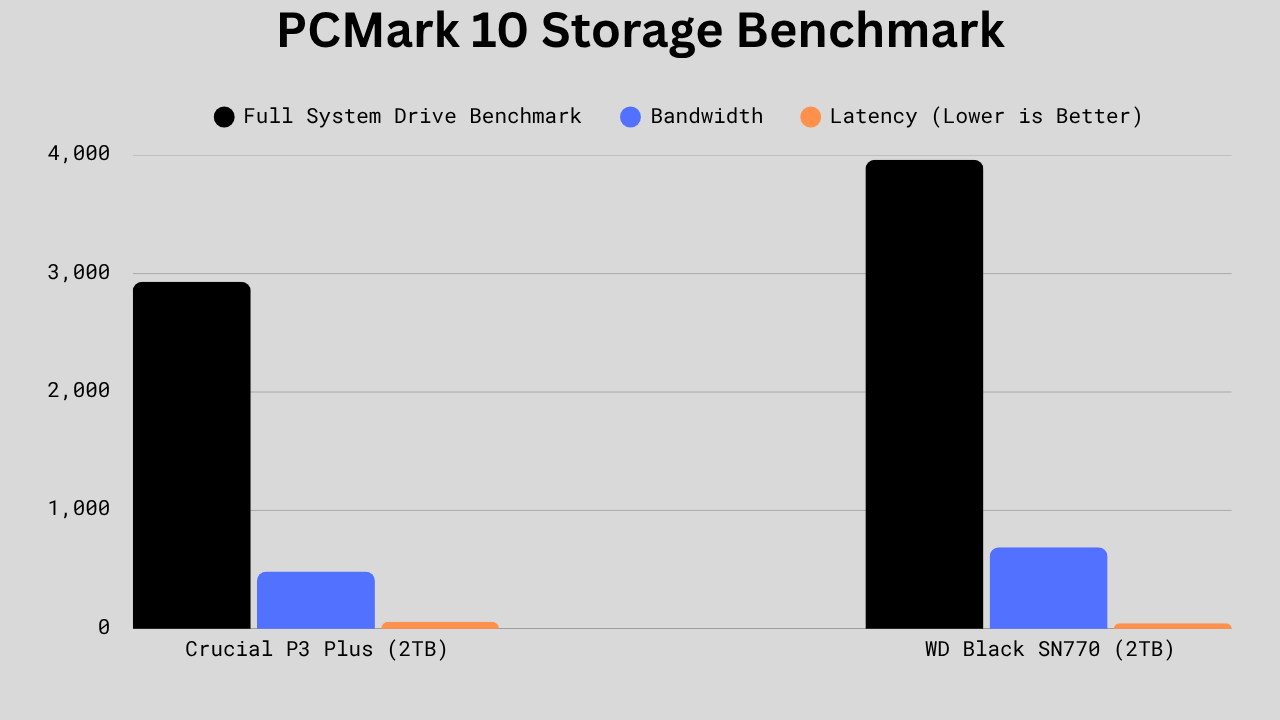
In the Full System Drive Benchmark, the WD Black SN770 beats the Crucial P3 Plus. It delivers an overall PCMark 10 score that is around 35% higher (3,962 vs. 2,932) and 42% more bandwidth (689 MB/s vs. 484 MB/s), meaning faster data handling. The SN770 also has approximately 22% lower latency (46 µs vs. 59 µs). These scores clearly mean that the SN770 is better at handling everyday tasks, along with creative software, video editing, etc, in a much better way.
3DMark Benchmark for Gamers
The 3DMark Storage test for gamers simulates real-world gaming activities such as game loading/saving/installing and recording live games/streaming.
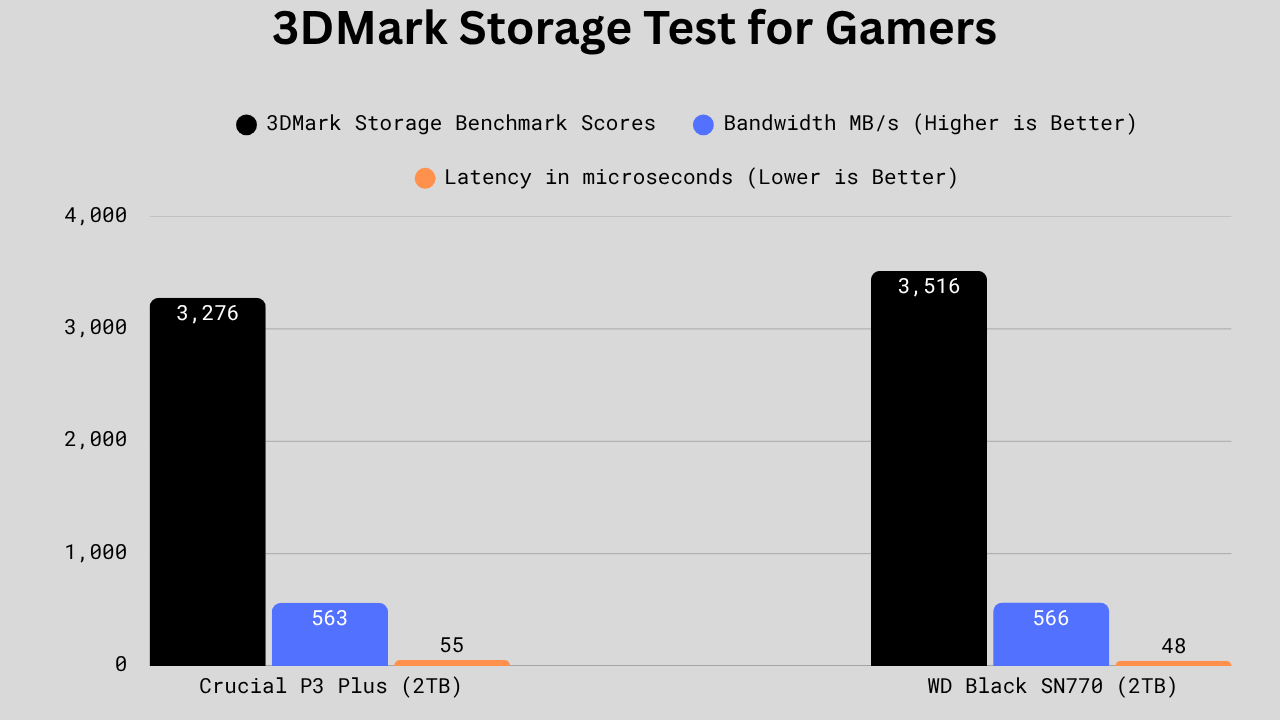
In the 3DMark Storage Benchmark, the WD Black SN770 achieves an overall score 7% higher (3,516 vs. 3,276) and nearly identical bandwidth (566 MB/s vs. 563 MB/s). However, the SN770 shows an advantage in latency, coming in 13% lower (48µs vs. 55µs),
These scores simply mean you can expect better gaming performance with the SN770. The difference is not very big, and it will be hard to detect any performance difference in the real world. But numbers are numbers, and the SN770 seems to be a good pick for gaming PCs and laptops.
CrystalDiskMark Peak Sequential Performance
The CDM Peak Sequential performance benchmark is useful for testing your drive’s capabilities when working with large datasets, especially sequential data.
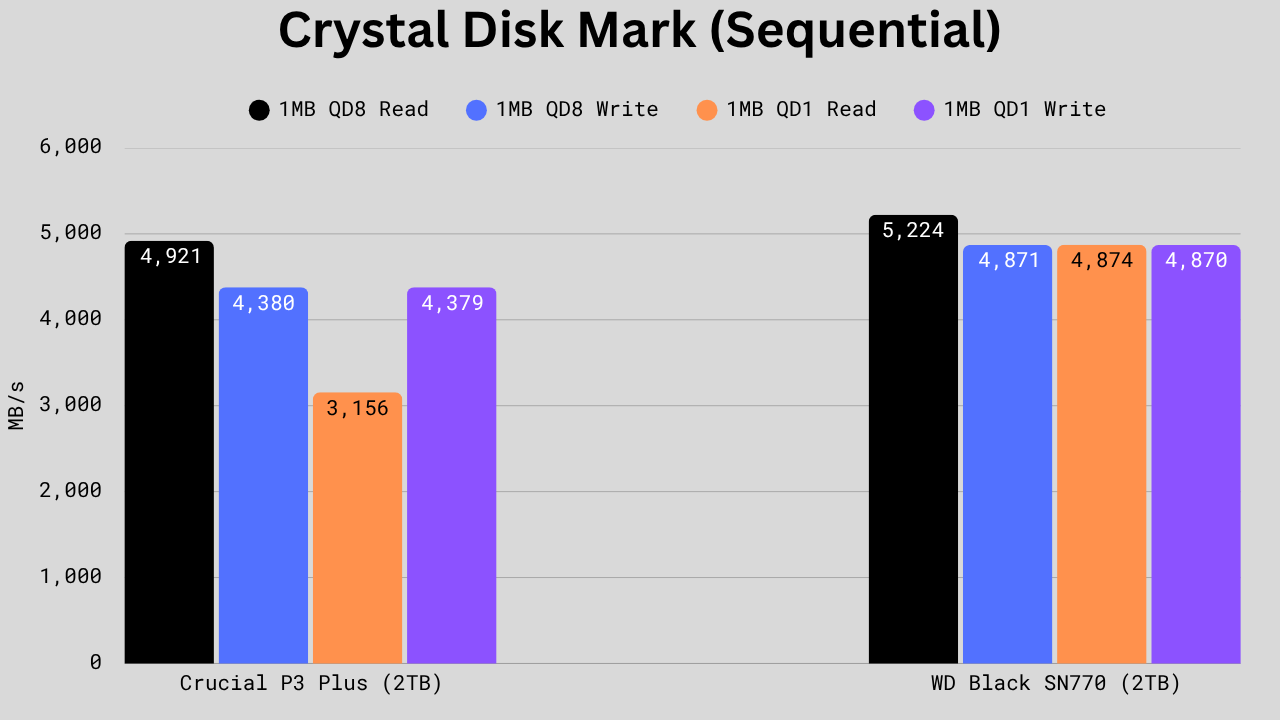
In sequential read/write tests, the WD Black SN770 beats the Crucial P3 Plus (2TB) across all queue depths. At QD8, it delivers around 6% faster reads (5,224 vs. 4,921 MB/s) and 11% faster writes (4,871 vs. 4,380 MB/s). The gap increases more at QD1, where the SN770 achieves a 54% faster read (4,874 vs. 3,156 MB/s) and 11% higher write speed (4,870 vs. 4,379 MB/s), making it especially responsive in low-concurrency scenarios like boot-ups or light workloads.
CrystalDiskMark Peak Random Performance
In the CDM peak random performance test, the drives are tested for their performance when working with small and non-contiguous blocks of data. This test depicts the normal day-to-day scenarios but in the form of a synthetic test. Meaning, you get only the number in MB/s or IOPS to interpret. However, a higher random performance generally mean a better everyday performance.

In Q1T1 4K random performance, which is considered critical for everyday responsiveness, the WD Black SN770 shows a notable 41% advantage in read speed (83 MB/s vs. 59 MB/s) over the Crucial P3 Plus. Write speeds are nearly identical (228 MB/s vs. 223 MB/s).
DiskBench File Transfer Rate
DiskBench is a popular benchmarking tool that tests your drive’s performance for moving raw data in both read and write scenarios. In this test, we are comparing the copy and read transfer rates of the drives.
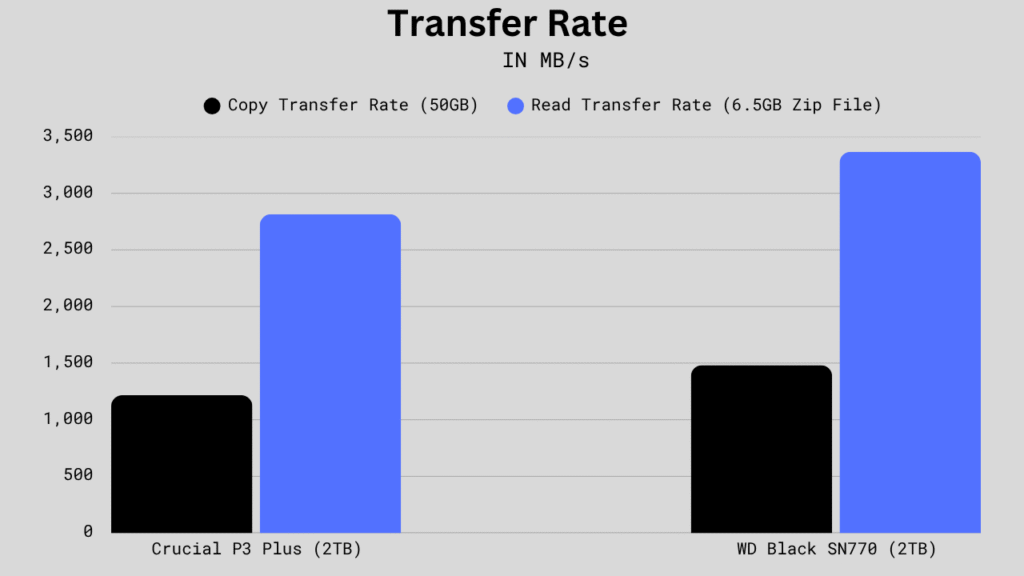
In file transfer tests, the WD Black SN770 again outpaces the Crucial P3 Plus. It achieves a 22% faster 50GB copy transfer rate (1,482 MB/s vs. 1,217 MB/s), resulting in quicker handling of large file transfers. For the 6.5GB zip file read, the SN770 is about 20% faster (3,367 MB/s vs. 2,815 MB/s), offering snappier access to compressed or archived data.
Power Consumption
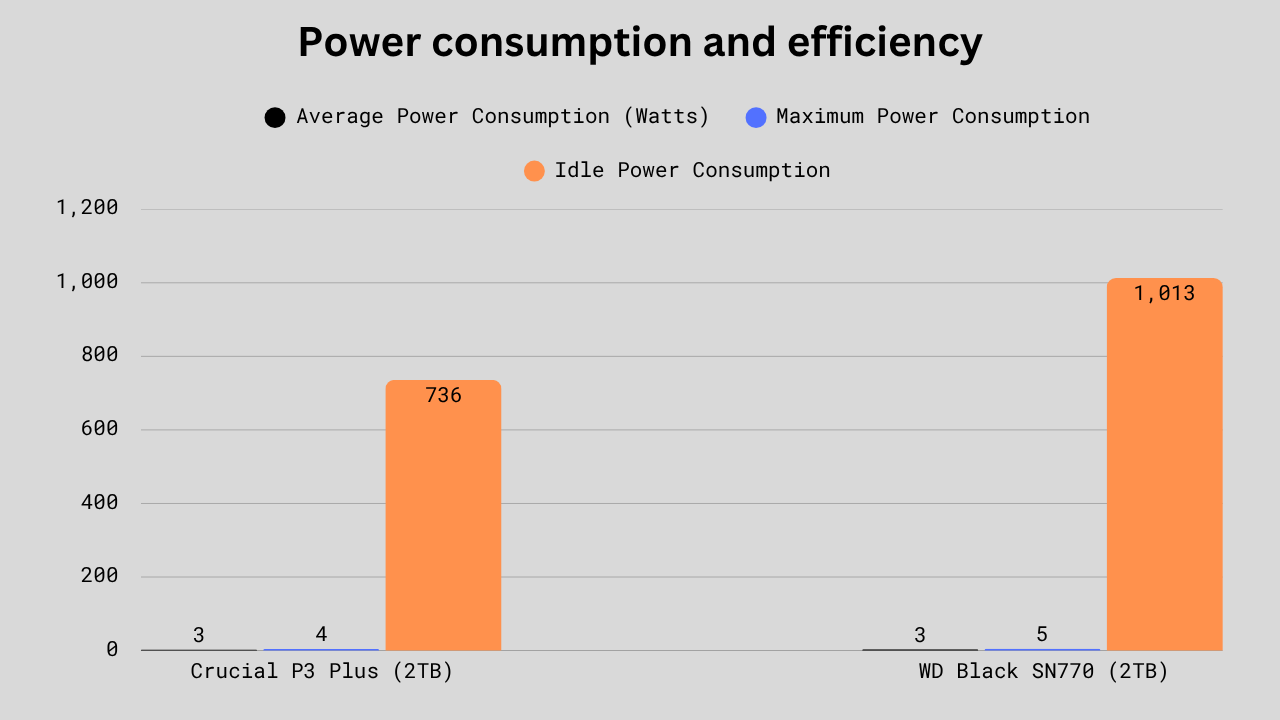
In terms of power efficiency, both SSDs have the same average power draw of 3W during active use. However, the WD Black SN770 draws slightly more under load, reaching 5W, compared to 4W on the Crucial P3 Plus. Idle power consumption is also higher on the SN770 at 1,013 mW, versus 736 mW on the P3 Plus, about 38% more.
We can say there may be more refinements, but the higher power consumption is mainly due to higher random and sequential performance. The number we should keep an eye on is the average power consumption, which is the same in both, around 3 watts. This indicates that you perform better with the SN770, but with a higher thermal output and power consumption. I would admit that the Crucial P3 Plus is much more refined in terms of thermal efficiency. The SN770 easily hit 80 degrees Celsius during sustained write operations. Again, it would be good to use a heatsink if your work involves heavy loads for extended periods.
Endurance, TBW, and Warranty Period
| Specification | Crucial P3 Plus | WD Black SN770 |
|---|---|---|
| Endurance (TBW) | 500GB: 110 TBW 1TB: 220 TBW 2TB: 440 TBW 4TB: 800 TBW | 250GB: 150 TBW 500GB: 200 TBW 1TB: 600 TBW 2TB: 1200TBW |
| MTBF (Mean Time Between Failures) | 1.5 million hours | 1.75 million hours |
| DWPD (Drive Writes per Day) | 0.1 | 0.3 |
| Warranty Period | 5 Years | 5 Years |
Only the warranty period is the same in both, i.e., 5 years. However, the problem lies with TBW (Terabytes Written), which is much lower on the Crucial P3 Plus. This is because the QLC NAND flash inherently has the lowest lifespan of the SLC, MLC, and TLC NAND flash. The mean time between failures is better with the SN770, which is again a good thing. Now, because the TBW is lower, the DWPD (Drive Writes Per Day) would also be lower in the P3 Plus. All these things are there to tell you about the reliability and endurance of an SSD. Now, because the SN770 has better numbers, it would generally mean it will have better reliability as well.
Technical Specifications
| Specification | Crucial P3 Plus | WD Black SN770 |
|---|---|---|
| Interface | PCIe 4.0 x4 | PCIe 4.0 x4 |
| Protocol | NVMe 1.4 | NVMe 1.4 |
| Form Factor | M.2 2280 | M.2 2280 |
| NAND Type | QLC (Quad-Level Cell) | TLC (Triple-Level Cell) |
| NAND Manufacturer | Micron 176-layer QLC | SanDisk 112-layer TLC |
| Controller | Phison E21T (DRAM-less) | WD Proprietary Controller (DRAM-less) |
| DRAM Cache | No (DRAM-less, HMB support) | No (DRAM-less, HMB support) |
| HMB (Host Memory Buffer) | Yes | Yes |
| Flash Channels | 4-channel | 4-channel |
| Power Consumption (Active) | ~4.3W | ~5.3W |
| Power Consumption (Idle) | ~50mW | ~20mW |
| Operating Temperature | 0°C to 70°C | 0°C to 85°C |
| Hardware Encryption | No | No |
| Warranty | 5 Years | 5 Years |
The NAND flash and controller are both better in the SN770. Hardware encryption is missing in both, which is a threat to data protection. The operating temperature is higher in the SN770, as we discussed above. Both drives use the Host Memory Buffer to compensate for the on-chip DRAM.
Price Difference


Which one should you choose: WD Black SN770 or Crucial P3 Plus?
I would choose the WD Black SN770 over the Crucial P3 Plus any day. The only time I might change my decision is if I get a very attractive discount. Otherwise, the SN770 would be my choice due to its superior performance, NAND flash, and higher TBW.
The Crucial P3 Plus remains a better option for regular users and can work reliably for years without issues. You may save a good amount of money, especially during the sales season. However, if your work requires random read/write performance or you are a gamer, the SN770 is a better choice.
I would also add that there are better options than both of these drives, such as the Samsung 980 Pro, Crucial P5 Plus, and Samsung 990 EVO. The prices may differ, but you should always compare all available options within the same generation.

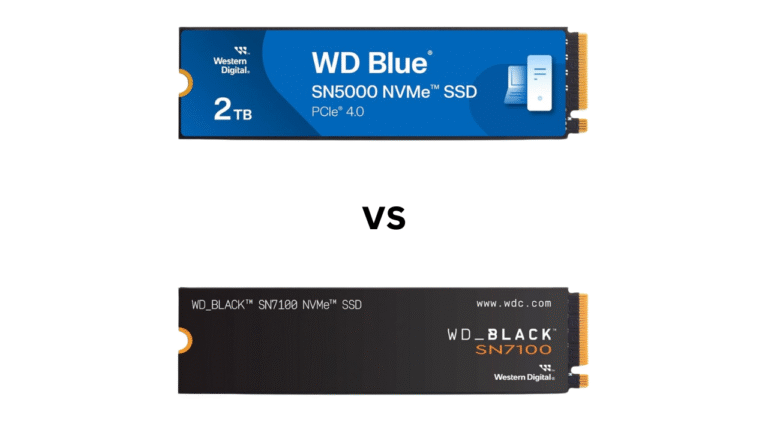
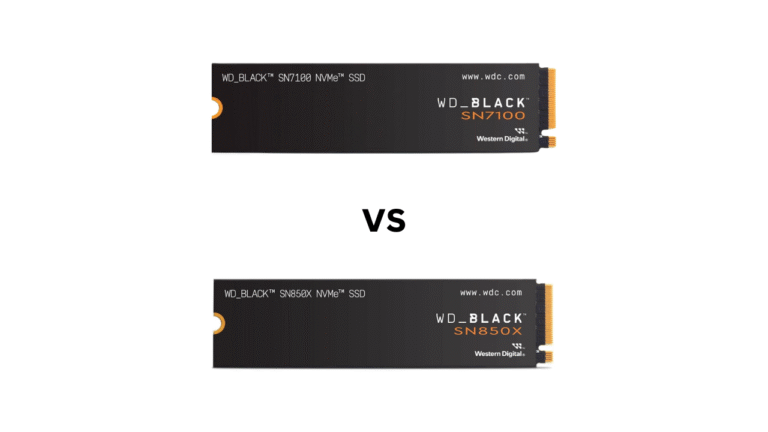



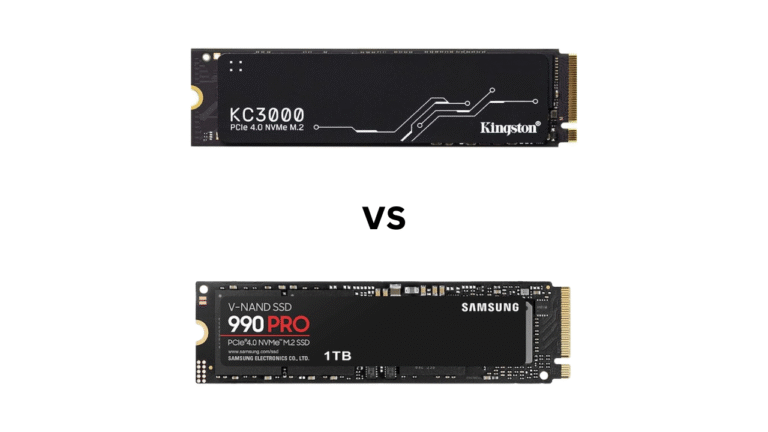
Definitely not the P3 I bought one on Amazon and it kept disappearing from my drives. I reseated it twice and it kept happening. I sent it in for a replacement. Got it, and it was fine….for 3 days before it disappeared again. Never buying a Crucial SSD again. It sucks because I have a Crucial BX500 that I have had 0 issues with.